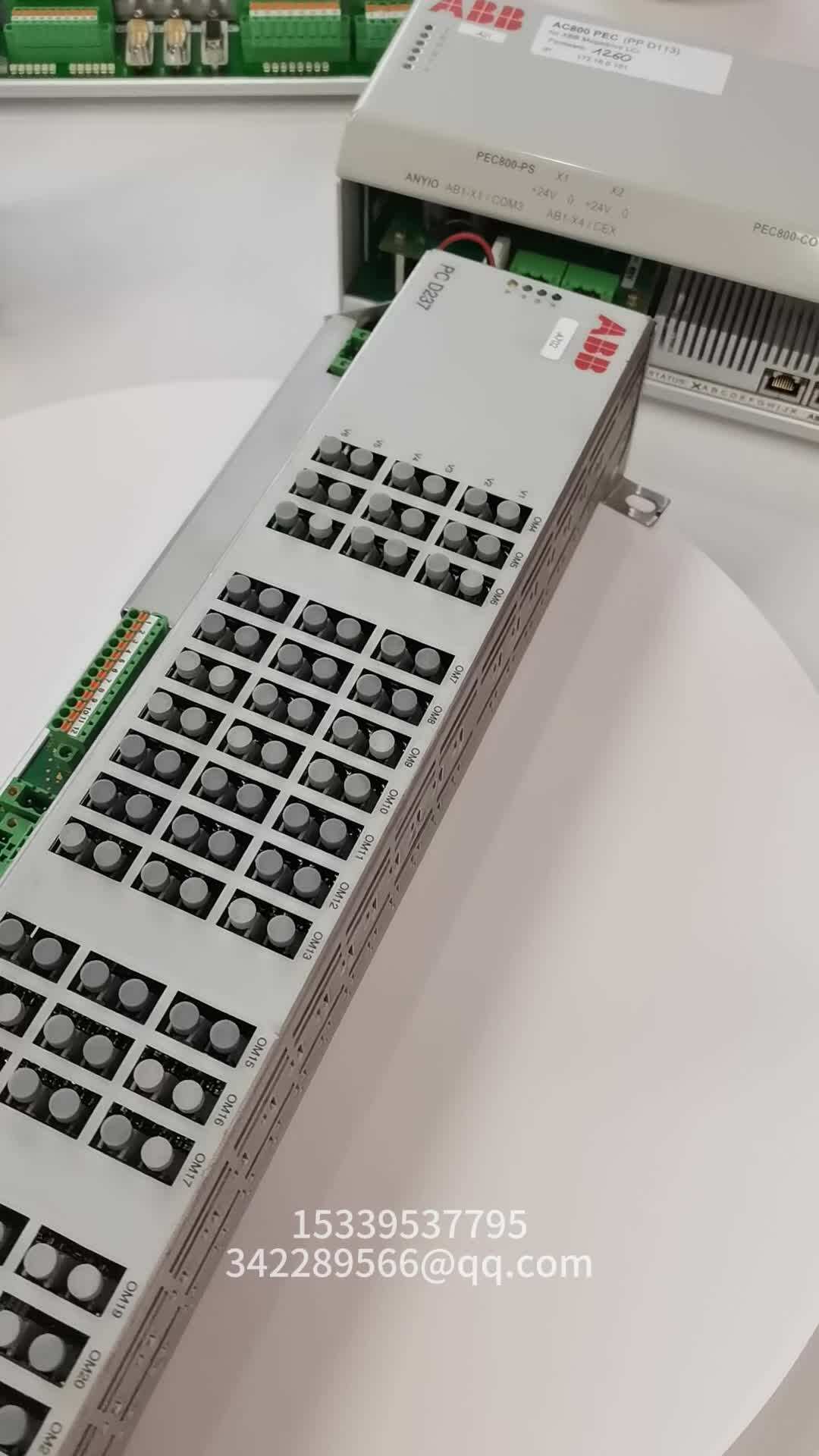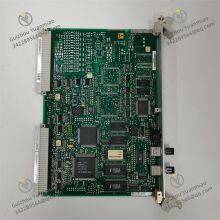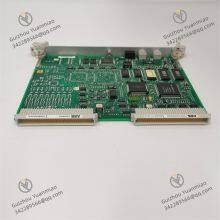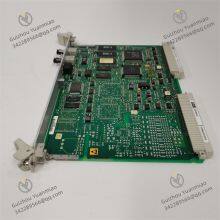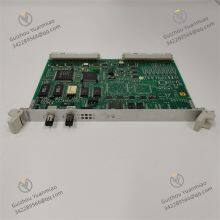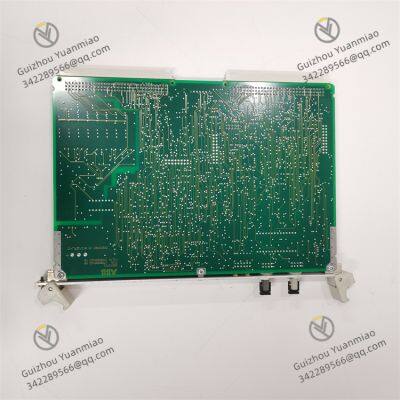Material
Other, Global universal model
Condition
Other, Global universal model
Task
Other, Global universal model
Mathematical Model
Other, Global universal model
Signal
Other, Global universal model
Customized
Non-Customized
Structure
Other, Global universal model
Operating Temperature
-40℃~70℃
Storage Temperature
-55℃~85℃
Relative Humidity
5% - 95% (non-condensing)
Size
140mm×100mm×35mm
I. Overview
The ABB 500MBA02 1MRB200053/M is a high-performance Central Processing Unit (CPU) module for Programmable Logic Controllers (PLCs). It belongs to the ABB AC 500 series PLC product family, with its core positioning focused on addressing the key requirements of industrial systems, including "collaborative multi-task computing, precise control of complex processes, cross-equipment data interaction, and stable operation in harsh environments". It provides an integrated solution of "control core - communication interconnection - fault diagnosis - safety protection" for automation systems in industries such as power generation, petrochemicals, smart manufacturing, and water treatment (e.g., large-scale chemical reaction units, smart production lines, and urban sewage treatment plants). This ensures long-term and reliable operation of the system under high-load, high-interference, and continuous production scenarios, while improving the automation level and operational efficiency of industrial production.

In the 100,000 ton/year polyvinyl chloride (PVC) production unit in the petrochemical industry, this CPU module can simultaneously handle the four-parameter closed-loop control of "temperature-pressure-liquid level-stirring speed" for 12 reactors, support real-time data interaction for over 800 I/O points, and achieve a control cycle of ≤1ms. It controls the temperature fluctuation of the reactor within ±0.5℃, ensuring stable PVC resin polymerization degree (deviation ≤2%). In smart automotive welding and assembly production lines, it can coordinate the synchronous operation of 20 welding robots and 5 conveyor lines, communicate in real-time with robot controllers via the EtherNet/IP protocol, and achieve a welding cycle control accuracy of ±0.1 seconds, increasing the daily production capacity of the production line by 15% (from 80 units/day to 92 units/day). In the aeration tank control system of urban sewage treatment plants, it can dynamically adjust the speed of aeration fans based on the influent COD (Chemical Oxygen Demand) and ammonia nitrogen concentration, interact with online monitoring instruments via the Modbus TCP protocol, reduce aeration energy consumption by 10%, and increase the compliance rate of effluent quality from 95% to 99.5%.
The 500MBA02 1MRB200053/M adopts an industrial-grade modular architecture with dimensions of 140mm×100mm×35mm. It is compatible with standard racks (4-slot/8-slot/12-slot) of the ABB AC 500 series and supports distributed expansion of multiple CPUs (up to 4 CPUs), meeting the partitioned control needs of large-scale systems. The CPU core uses a 32-bit ARM Cortex-A9 dual-core processor (with a main frequency of 800MHz), paired with a Xilinx Artix-7 FPGA (100k logic units) for real-time logic acceleration. Its computing performance reaches 150k steps/ms (Ladder Diagram, LD) and 250k steps/ms (Structured Text, ST). The housing is made of UL94 V-0 grade flame-retardant ABS material with an IP20 protection rating, and has a built-in dust filter and heat dissipation channel to enhance dust protection and heat dissipation. It has an operating temperature range of -40℃~70℃ and a relative humidity of 5%~95% (non-condensing), making it compatible with low-temperature outdoor control cabinets and high-temperature workshop equipment cabinets. Internally, it adopts a three-module independent isolation design of "core computing - data caching - communication interface", combined with multi-layer electromagnetic shielding technology, which effectively resists electromagnetic interference in industrial sites (such as high-frequency noise generated by frequency converters and startup shocks of high-power motors). The Mean Time Between Failures (MTBF) is ≥200,000 hours (per Telcordia standard at 25℃). It is compatible with ABB Control Builder M programming software and third-party SCADA systems (e.g., Wonderware Intouch), and supports mainstream industrial protocols such as Profinet, Modbus TCP, and EtherNet/IP, reducing the difficulty of system integration.

II. Technical Parameters
Core Computing Parameters
2. Communication Parameters

3. Fault Diagnosis and Safety Parameters
4. Environmental and Reliability Parameters

III. Functional Characteristics
1. High-Performance Multi-Task Computing
With "high computing power and fast response" as its core, the 500MBA02 1MRB200053/M realizes efficient parallel processing of multi-tasks in medium and large-scale industrial systems through the collaboration of dual-core CPU and FPGA:
Dual-Core Collaborative Computing: The 800MHz ARM Cortex-A9 dual-core processor allocates one core to handle complex control algorithms (such as cascade PID and fuzzy control) and the other core to focus on data communication and fault diagnosis, improving computing efficiency by 80% compared to single-core CPUs. In PVC production units, one core calculates the temperature control parameters of 12 reactors in real-time, while the other core interacts with 8 frequency converters and 16 sensors simultaneously. The control cycle is stably maintained at 500μs, and the temperature control accuracy reaches ±0.5℃.
FPGA-Accelerated Real-Time Logic: The FPGA with 100k logic units is responsible for high-speed processing of digital signals (such as pulse counting and interlock logic judgment), with a response time of ≤100ns, which is 10 times faster than pure CPU control. In smart welding and assembly production lines, the FPGA receives "in-place signals" from 20 welding robots in real-time, completes logic judgment within 100ns, and issues "welding start" commands, with a cycle deviation of ≤0.1 seconds.
ECC Memory Protection: The 1GB DDR3 SDRAM supports ECC (Error Checking and Correction) function, which can automatically detect and correct single-bit memory errors, avoiding program crashes or data abnormalities caused by memory fluctuations. In the long-term operating control system of sewage treatment plants, the ECC function can reduce more than 90% of memory-related faults, enabling the system to operate continuously for 1 year without shutdown.

2. Precise Control of Complex Processes
In response to the characteristics of industrial systems, such as "multi-parameter coupling and variable operating conditions", the module achieves precise control in all scenarios through flexible control algorithms and adaptive adjustment:
Multi-Algorithm Adaptation to Different Scenarios: It has built-in algorithms such as PID, cascade PID, feedforward-feedback, and fuzzy control, which can be flexibly selected according to process requirements. In the control of PVC reactors, the cascade PID algorithm (main loop: reaction temperature, secondary loop: steam flow) is adopted. When the steam pressure fluctuates (e.g., drops from 0.8MPa to 0.6MPa), the secondary loop adjusts the steam valve opening within 100ms, and the main loop stabilizes the temperature within 500ms, reducing the adjustment time by 60% compared to traditional PID. In the aeration control of sewage treatment, feedforward-feedback control is adopted to adjust the fan speed in advance based on the influent COD concentration, avoiding insufficient aeration caused by water quality fluctuations.
Load-Adaptive Optimization: It supports automatic adjustment of control parameters according to changes in process load, adapting to the entire operating conditions of "startup - stable operation - load switching - shutdown". For example, during the reactor startup phase, it automatically increases the integral time (I) to avoid temperature overshoot; during the stable operation phase, it reduces the proportional coefficient (P) to reduce temperature fluctuations; during the load switching phase (e.g., increasing from 50% load to 100% load), it increases the derivative coefficient (D) to accelerate the response speed, ensuring smooth transition of process parameters.
High-Precision Pulse Control: It supports high-speed pulse output (up to 1MHz), which can directly control servo motors and stepper motors to achieve precise position and speed control. In the positioning of conveyor lines in smart production lines, the servo motor is controlled via 1MHz pulses, achieving a positioning accuracy of ±0.1mm, which meets the requirements of precision assembly.



